Public space makes a city

Public spaces constitute the life-stream of a city, and these are in short supply in Dhaka.
Home to over 15 million people now, Dhaka is one of the most densely inhabited places on earth. Buildings tumble upon one another, people and vehicles jostle on the street, and constantly changing skylines make Dhaka a metropolis in furious motion. Beneath that teeming appearance lie worrying urban crises that threaten the city's future. One such crisis is the lack or fast disappearances of open, public and civic spaces.
A narrative of a city is not only about buildings. Even if buildings literally form the building block of a city, it is made of an intricate relationship of buildings and open spaces. An experience of a city is about the multiple corridors of movement and different places of arrival and assembly. Open spaces are thus one of the most important ingredients of a city. Such spaces in any city are wide-ranging, from formal to informal, from large-scale to intimate, and from public to semi-public. Large spaces include areas of gathering, maidans, commons, parks, gardens, lakefronts, riverfronts, etc., while small spaces may be an intersection of two lanes, space under a tree on a sidewalk, or the sidewalk itself.
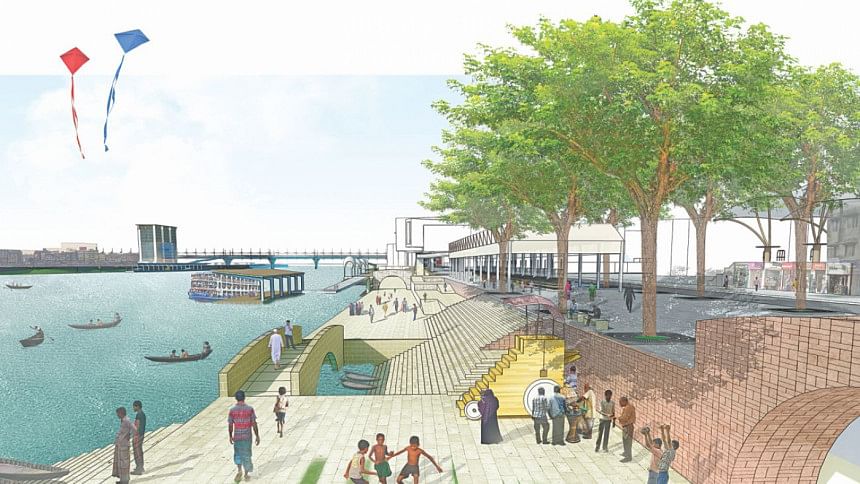
In Dhaka's graduation to a new economy and a better metropolis, and attempts to remove the stigma of constantly being labelled as unliveable, the development of proper public places is central and critical.
The availability and quality of public spaces are keys in assessing the liveability of a city. There are challenges in entertaining this theme. The first problem is dealing with anything designated as "public" as there are different perceptions of the public and public space. From an old classist perspective, which has a predominant hold in the imagination of the middle and upper classes, the "public" suggests the street, and the hot mess associated with it: the chaos, the dust, and the miserable condition. The middle and upper class generally avoid anything associated with the public, be it people or places.
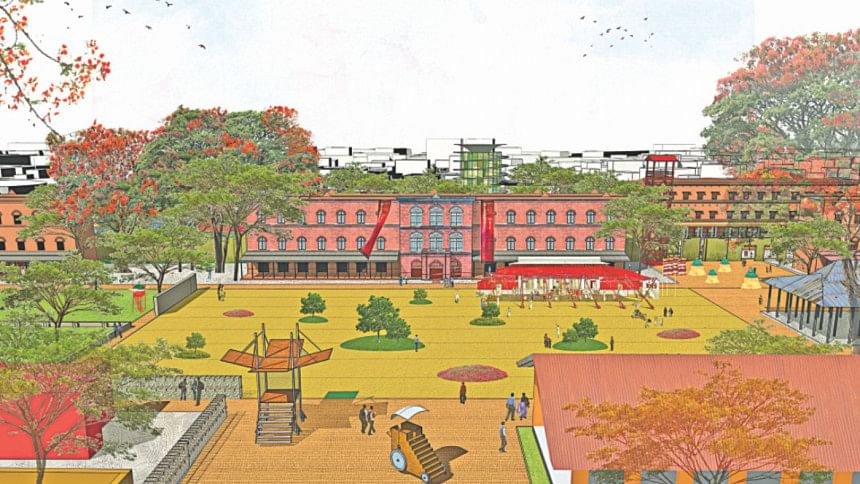
Such a perceptual short-sightedness is a hindrance in the enhancement and development of public spaces. Because such perceptions inhabit planning and policy making at higher level, the end-result is a lack in the production of public spaces or facilities. Consequently, there is more investment in elevated roads than say public transport such as rail or bus, or pedestrian network in the city.
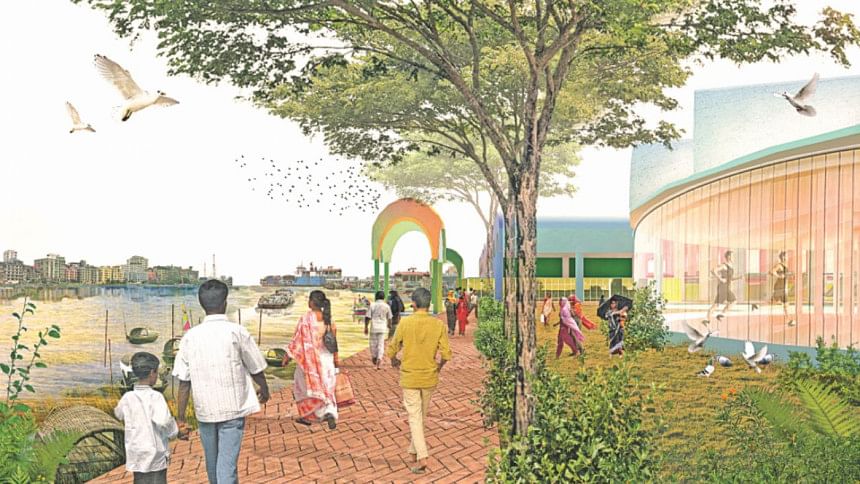
There are other challenges—one is the constant depletion of public and open spaces in a contestation over who will "own" or "use" them. The conflict between "rights to the city" (as spelled out by the French sociologist Henri Lefebvre in the 1960s) and the actual ownership of space represents a low-grade warfare in the city. The public space is a site of tussle between the private and the state, and often the state and the public. Often, despite an avowed claim, the public is not on the top of the list of the state's agenda in the allocation of uses for public spaces. And in other cases, spaces that are designated as public are curtailed in their "publicness," especially when they are surveilled, gated, or controlled in an exclusionary way.
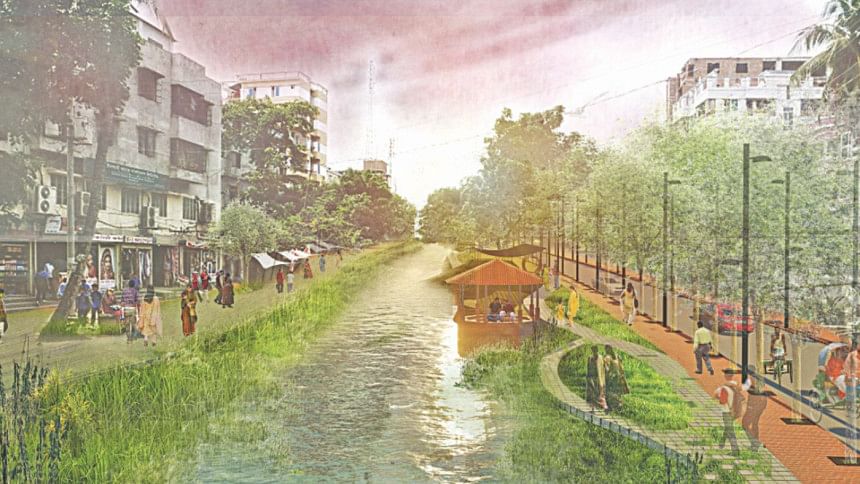
And yet public spaces make the city—they are the theatres of the city's life and energy. And if Dhaka lacks in the making and shaping of designed public places, some of us are committed to envisioning them. Bengal Institute for Architecture, Landscapes and Settlements has conducted studies on public spaces at various scales and scopes, in imagining how they should look like, and how they should perform in our context.
Dhaka's climate is naturally suited to making a garden city; with a proper design and new imagination, and determined directives from city authorities, Dhaka can again be a place of openness, of light, green, and air. Far from being a calamitous condition, Dhaka can become a tropical model that responds to the unique geological and environmental conditions of being girdled by rivers, canals and waterways. Even until the 1960s, with its spacious green spaces, majestic trees, crisscrossing canals, civilised riverbanks, and boats plying through the heart of the city, Dhaka promised to be both a garden city and a place by the water. With buildings in a setting of lakes, gardens, orchards, parks, and new public spaces, Dhaka can still be truly a Bengali city.
It would be a pity if all of Dhaka began to look the same because of a single-minded development orientation in which the erection of buildings seem to be biggest achievement. There should be strong and clear directives for the production of a public realm that is about safe and attractive spaces for everyone to access and enjoy.
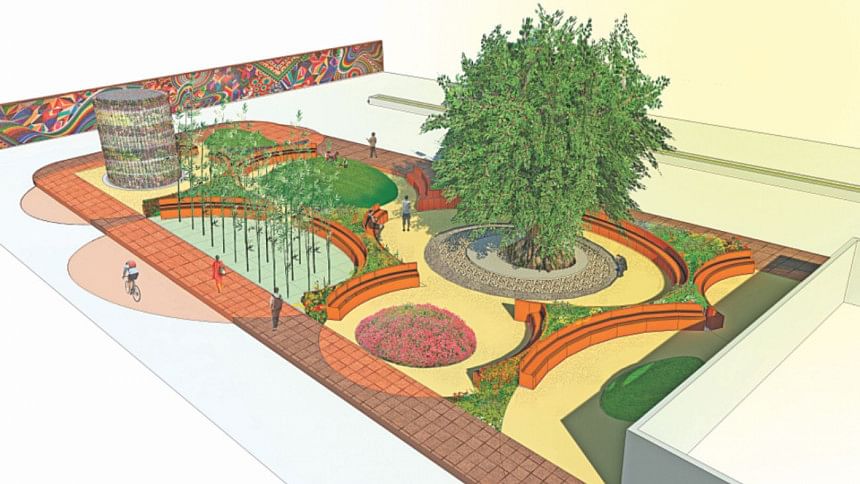
Certain areas, which can be described as heritage-rich "urban treasures," exist in the city. These should be marked as special zones, and every means should be adopted to preserve and open them up as part of new public spaces. One such good measure is the ongoing plan for converting the Old Central Jail area as a network of public spaces, along with new programmess and facilities.
The South Plaza at Sher-e Bangla Nagar was once a lively, people-oriented space that was accessible to everyone. It was a venue where one could enjoy a world-class architectural marvel and experience an uplifting environment, which was precisely the intention of Louis Kahn when he named it a "plaza". It's a pity that what was once a gift to the people of the city has now become off-limits. Certainly issues of security can be managed in many other ways, and the gift to the city should return as a public space.
Many under-recognised areas abound in the city that should be designated as assets and restored for greater and better public use. A few such examples: Balda Garden, Ali Miar Talao, Ramna Park, and Armanitola Maidan.
Anyone will notice that Dhaka possesses natural conditions for creating a distinctive public realm. The riverbanks of Dhaka, even if much of it is encroached upon or abused, are still natural assets that can be modulated to create something wonderful.
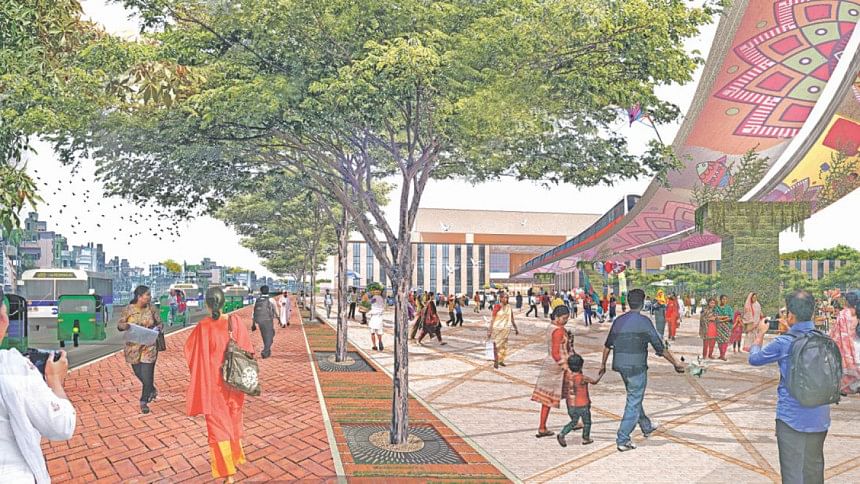
A radical reclamation of Buriganga River and its banks on both sides is crucial for an economic, transport and cultural reinvigoration of the oldest part of the city. Riverviews, continuous promenades, gardens and resting spots and selective urban nodes along the riverbank can create a total urban environment befitting Dhaka. The river can become a sustainable life-blood, and the riverfront a much more organised condition providing renewed recreational, civic, touristic, economic, and transport facilities for the whole city. And if Buriganga, why not Turag and Balu? From Tongi Bridge to Sadarghat, the almost-30km of riverbanks offer a grand opportunity for creating the longest urban public realm of any Asian city.
The city of Dhaka used to be synonymous with trees. Flower-bearing, scent-emanating trees, and trees that marked the passing of the seasons. An example is the street in front of Dhaka Medical College, or what it used to be, a most dignified row of shadow-giving, corridor-creating trees, or a street intersection in Becharam Dewry with a banyan tree creating a cool space-defining public square. The climate of Dhaka desires it to be a garden city.
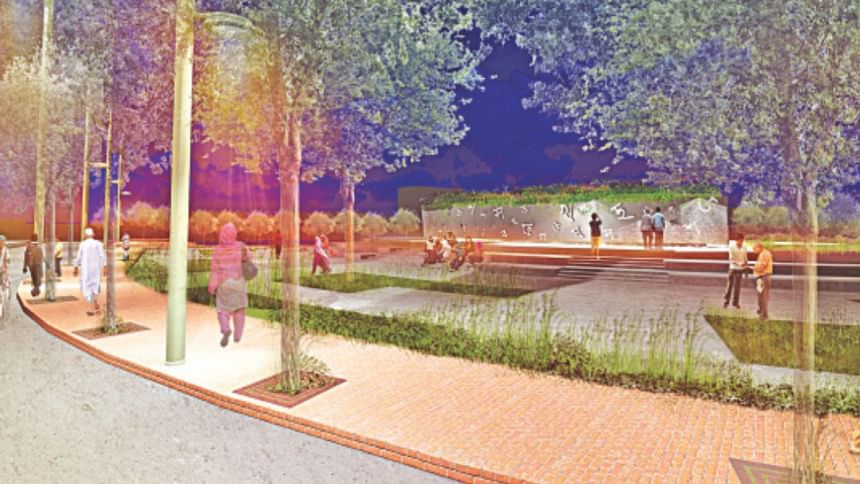
While open and public places define the civic realm of a city, sidewalks or footpaths are a necessary component of that network. The sidewalk is actually a linear public space that defines the humanity of any decent city; it belongs to the culture of walking, strolling and promenading, and getting around without hindrances. This is particularly critical for Dhaka where more than 60 percent of the people walk. Such urban pedestrian systems as boulevards, promenades, riverwalks, or simple sidewalks that are the hall-mark of all liveable cities are for most part non-existent in Dhaka. And if they do exist, they are in bits and pieces, and do not create a legible and defined network.
It is crucial to revise our perception of sidewalks: A sidewalk is not the extension of a drain, nor is it a three-feet-wide cover over it; it is a space on its own, it is a public space. A proper walkable condition is a civic right. A sidewalk in Dhaka will continue to be used for multiple reasons especially for portable commerce and other improvisations, still a guideline for sidewalk practices should be developed that embrace both the pleasure of walking and the social interaction of commerce.
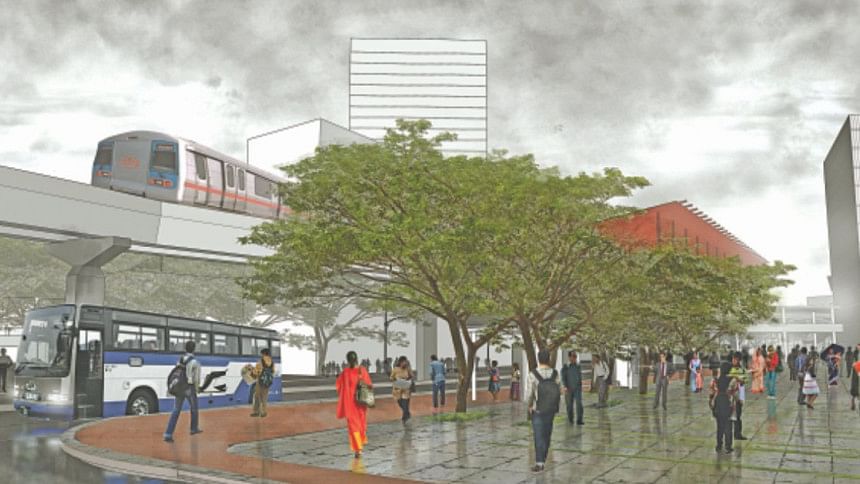
Proper public spaces are linked to other critical aspects of the city. It is often overlooked that the overall transportation system of any city is intimately linked to the network of walkability created by sidewalks and public hubs. When the metro rail comes to Dhaka, it will have to depend on an efficient walkable system. One will leave home for work, walk to the station, get off at another station to go to a workplace or a school or hospital. On a holiday, a family will walk off to a station to get to a public space where an event is taking place. After a family meal at an eatery and walk by a promenade, they will catch another train to head back home. Such is the landscape of public spaces in a decent city.
Envisioned for different scales and locations, here is a gallery of ideas for public spaces developed at Bengal Institute.
Kazi Khaleed Ashraf is an architect, and directs Bengal Institute for Architecture, Landscapes and Settlements. Md Masudul Islam is an architect, urban designer, and Research Coordinator at Bengal Institute. Ideas and images were produced by members of Bengal Institute.
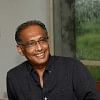



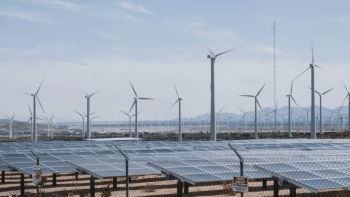
Comments